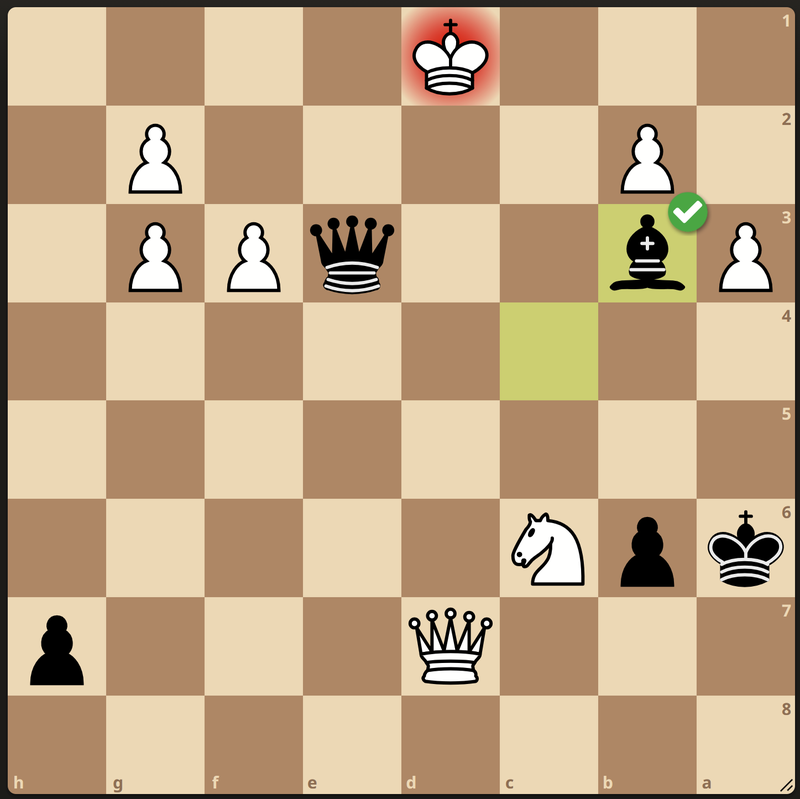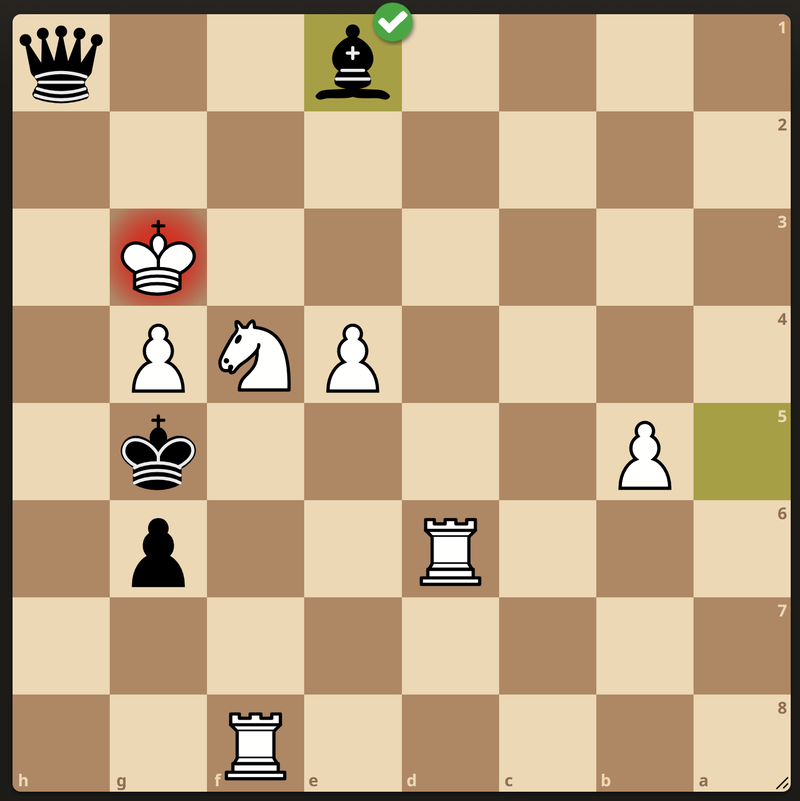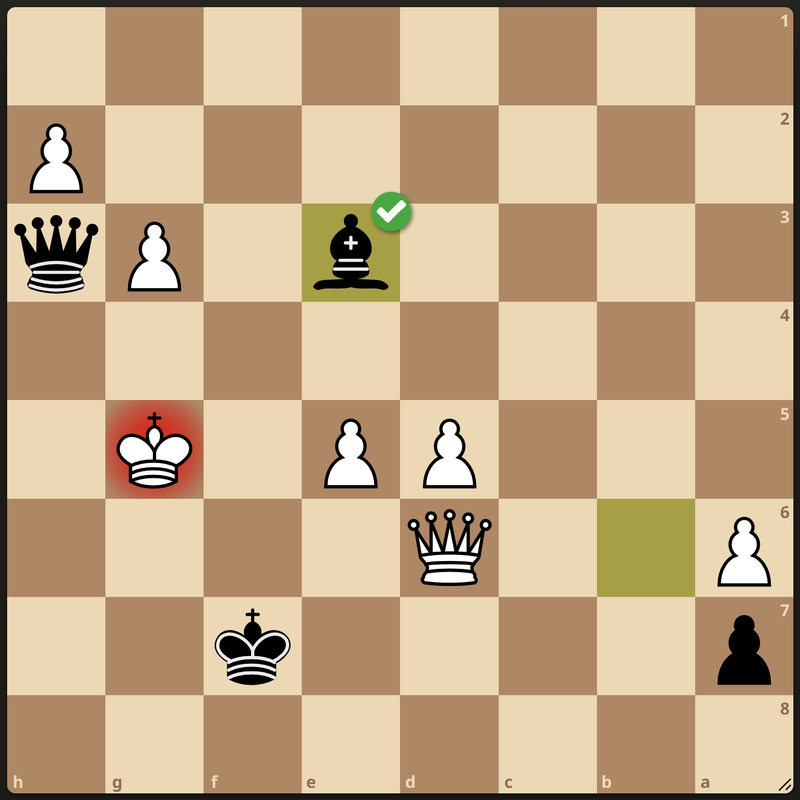
The Balestra Mating Pattern
Another puzzle derived from lichess.org dataOverview
Balestra Mate is a checkmate pattern in chess that involves a queen and a bishop working together to trap the opposing king. The name Balestra comes from the Italian word for crossbow, reflecting the arrangement of the pieces, and the precision required to implement this structure.
This pattern requires a Queen to coordinate with a Bishop:
- Queen's Role: The queen cuts off the king's escape routes both diagonally and vertically.
- Bishop's Role: The bishop delivers the checkmate, ensuring the king cannot move to any adjacent squares.
Many major chess sites like lichess.org, chesstempo.com, chessmood.com or chess.com describe the above pattern and it seems therefore, a good practice to add a tool for practicing with puzzles from real online games.
The Balestra mating pattern is now available as a puzzle theme on lichess.org.
This theme has the King often at the border of the board (top, left, right, bottom), but the pattern can also occur in the middle of the board, if the King's movement is limited by another piece.
This mating pattern can, of course, also occur with promotion, like in this puzzle XpSfV, where there is initially no Queen, and the whole pattern evolves in a sequence of 7 moves (I would pronounce you as chess genius, if you can calculate this far ahead).
Conclusions
Please refer to my first blog post Parsing Chess Data to Discover Mating Patterns to better understand how puzzles for this theme were identified. Because I think it's important to understand that I neither created nor invented these puzzles. The puzzles of this theme were already available in the collection of the lichess.org database that now contains 5,5 million puzzles drawn from roughly 7 billion games. Finding and extracting the raw puzzles is a huge computational effort that is implemented thanks to thibault, who runs multiple computers in parallel, to keep up with the pace of games that are played and therefore, puzzles that need extraction and generation.
In the future we will be adding more themes like the Triangle mate or the Blind Swine mate, as posted, previously. And I am also looking to find ways for defining and releasing something as abstract as a Situational Pin, but that's probably not happening soon, since themes like this, are rather difficult to render in programming, require much more manual effort for reviews, but are definitely educational.
Let me know via my lichess inbox or through the comment section of the blog, if you like puzzle themes and whether you want to contribute here. Whether you can program Python, review a long list of puzzle candidates, or just create artwork for the next theme. There are always many things to support and speed up this process.
You may also like
 thibault
thibaultHow I started building Lichess
I get this question sometimes. How did you decide to make a chess server? The truth is, I didn't. dirkster99
dirkster99The Vukovic Mating Pattern
Another puzzle theme generated from lichess.org data dirkster99
dirkster99


